 |
Suit
from the 1660s, but only the upper body garments are
extant clothing, the petticoat breeches are reproductions.
The doublet of the earlier decades has turned into a
short bolero-type jacket. The suit used to be displayed
in the V&A museum. |
|
 |
The
wide collar of earlier which went with the doublet,
has changed its changed and the falling bands of the
1660s are narrow at the side, which is due to the fashion
of the long flowing, curly hair, which would hide the
collar anyway. |
 |
Close-up
of the parchment lace which covers the doublet and the
Venetian gros point lace the falling band is made of.
The neck opening of the shirt too has lace frills. |
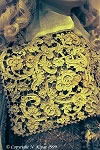 |
The
falling band became longer in the front and shorter
at the sides and the back. |
 |
Photo
of a longer jacket or cassock, which was worn over the
bolero-style doublet. The longer jacket derived from
the cassocks of the earlier period. |
 |
Heavily
embroidered suit of the 1670s. Please see the page 'Surviving
Costumes' for a better colour photo which is copyrighted
by the V&A museum of the suit. It was said to have
been worn by James II at his engagement, but this is
now ruled out, still, the quality is superb. |
|
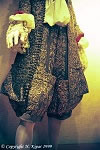 |
The
breeches, which are in the transitional stage of turning
from the extremely wide petticoat breeches into the
narrower ones which are held in below the knees of the
later decades. |
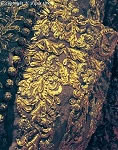 |
Close-up
of the metal thread embroidery on the brown worsted. |
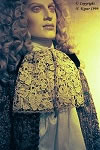 |
The
lace cravat worn now, which also made of Venetian gros
point needlelace. |
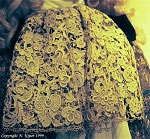 |
Close-up
of the cravat. |
 |
Another
surviving garment from the V&A museum, which is
from the 1670s. Not on the embroidered cloak, which
is a full circle survived, but also the garments below. |
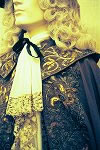 |
Close-up
of the embroidered collar. |
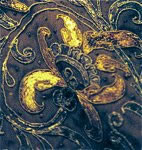 |
Detailed
shot of the embroidery pattern on the cloak. |
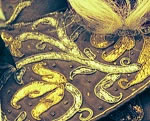 |
Detail
of the metal thread embroidery. |









